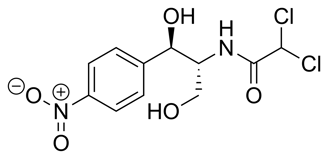Gray Baby Syndrome
Gray Baby Syndrome is a condition that primarily affects newborns, especially premature infants. It occurs due to the accumulation of the antibiotic chloramphenicol in the baby’s system, leading to severe toxicity. This condition is named after the characteristic grayish skin discoloration seen in affected infants.
PAEDIATRICS
Rishwin A R
2/25/20252 min read


Causes of Gray Baby Syndrome
Gray Baby Syndrome develops due to the inability of a newborn’s immature liver to metabolize and excrete chloramphenicol effectively. This results in toxic levels accumulating in the bloodstream. The primary reasons for this include:
Immature liver enzymes: Newborns, especially preterm infants, lack sufficient UDP-glucuronyl transferase, an enzyme responsible for drug metabolism.
Renal immaturity: The kidneys of newborns are underdeveloped, further reducing the excretion of chloramphenicol.
High doses of chloramphenicol: Excessive or prolonged use of this antibiotic can overwhelm the baby’s metabolic system.
Parenteral (IV) administration: Injected forms of chloramphenicol have a higher risk of causing toxicity than oral doses.
Symptoms of Gray Baby Syndrome
The symptoms of Gray Baby Syndrome usually appear within 2 to 9 days after starting chloramphenicol treatment. These symptoms can escalate quickly and require immediate medical attention. Common signs include:
Grayish-blue skin discoloration: The hallmark feature of GBS, caused by circulatory collapse.
Hypotension (low blood pressure): Leads to poor oxygen delivery to tissues.
Vomiting and refusal to feed: Indicating gastrointestinal distress.
Lethargy and weakness: Due to impaired oxygenation and metabolic disturbances.
Respiratory distress: Labored or irregular breathing, which can progress to respiratory failure.
Cyanosis: A bluish tint to the skin, lips, and nails, signifying oxygen deprivation.
Hypothermia: A dangerously low body temperature
Diagnosis of Gray Baby Syndrome
Diagnosing Gray Baby Syndrome involves a combination of clinical evaluation and laboratory testing. The following approaches help confirm the condition:
Clinical history: Reviewing medication use, especially chloramphenicol exposure.
Blood tests: Measuring chloramphenicol levels in the bloodstream.
Arterial blood gases: Assessing oxygen levels and acidosis.
Liver and kidney function tests: Evaluating the baby’s ability to metabolize and excrete toxins.
Treatment of Gray Baby Syndrome
Once Gray Baby Syndrome is suspected or diagnosed, immediate intervention is necessary. Treatment includes:
Discontinuing chloramphenicol: Stopping the drug prevents further toxicity.
Supportive care: Monitoring vital signs and providing oxygen therapy if needed.
IV fluids: To stabilize blood pressure and improve circulation.
Activated charcoal: In some cases, charcoal may help absorb residual chloramphenicol.
Exchange transfusion: In severe cases, replacing the baby’s blood with donor blood can help eliminate the drug faster.
Dialysis: Hemodialysis or peritoneal dialysis may be required in extreme cases to remove chloramphenicol from the bloodstream.
Prevention of Gray Baby Syndrome
Preventing Gray Baby Syndrome is straightforward—avoid the use of chloramphenicol in newborns unless absolutely necessary. Key preventive measures include:
Alternative antibiotics: Preferably using safer antibiotics for neonatal infections.
Dose adjustments: If chloramphenicol must be used, strict dosing guidelines should be followed.
Monitoring drug levels: Regular blood tests to track chloramphenicol concentration.
Education and awareness: Healthcare providers should be well-informed about the risks of using chloramphenicol in newborns.
Frequently Asked Questions (FAQs)
1. What causes Gray Baby Syndrome?
Gray Baby Syndrome is caused by the accumulation of the antibiotic chloramphenicol in a newborn’s system due to immature liver and kidney function, leading to toxicity.
2. How is Gray Baby Syndrome treated?
Treatment involves discontinuing chloramphenicol, providing supportive care (oxygen, IV fluids), and in severe cases, exchange transfusion or dialysis to remove the drug from the bloodstream.
3. Can Gray Baby Syndrome be prevented?
Yes, prevention involves avoiding the use of chloramphenicol in neonates, using alternative antibiotics, and monitoring drug levels if necessary.
4. Why does the baby’s skin turn gray?
The grayish-blue skin discoloration occurs due to circulatory collapse and reduced oxygenation caused by chloramphenicol toxicity.
5. Is Gray Baby Syndrome fatal?
If left untreated, Gray Baby Syndrome can be fatal. However, with prompt medical intervention, most babies recover fully.
Syndromes.xyz
Explore medical syndromes and their details here.
For Educational purposes only
The information on this site is not in any way, replacement for professional advice. Always consult your physician regarding personal queries
Connect
Support
syndromesxyz@gmail.com
© 2024. All rights reserved.
